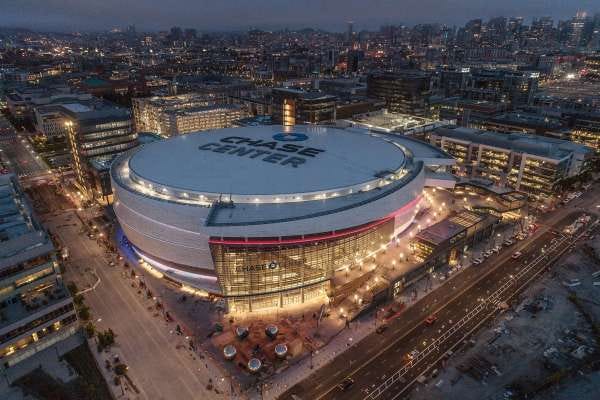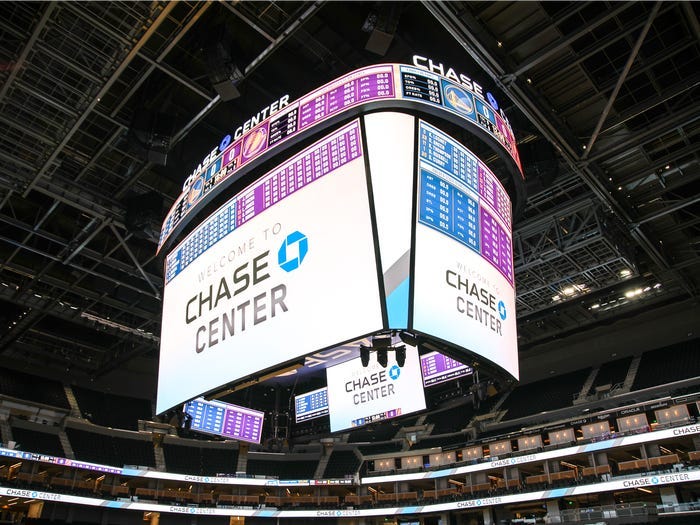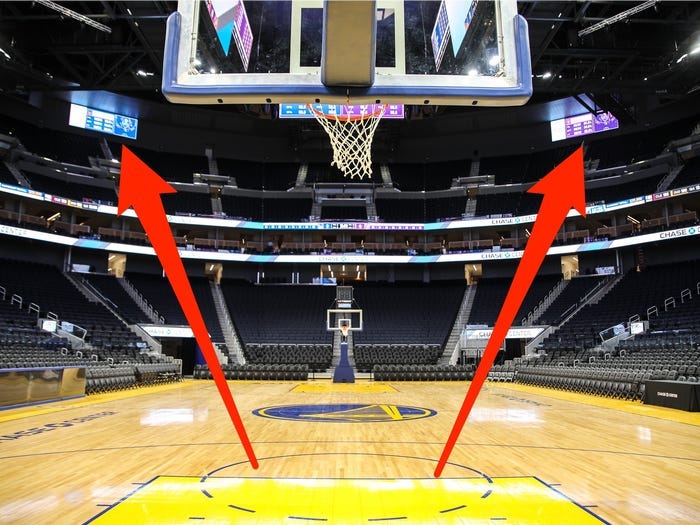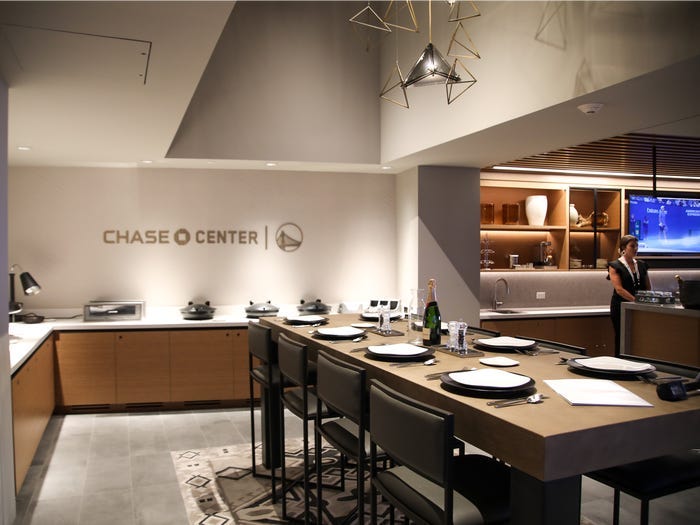This week the Warriors (NBA) played their first game of the new NBA season at their brand new arena: Chase Center. This is why we decided to take a closer look at the new arena.
Let’s start with the cost to build the new arena:
The arena was privately financed. The project to finance the whole project was initially planned at $800M, but ended up costing $1.6B.
Now let’s take a look at some key statistics:
- The entire project spans 11 acres and includes 580,000 square feet of office space, 100,000 square feet of restaurant and retail space, including a 10,000-square-foot Warriors Shop.
- 300 permanent bike valet parking spaces, 950 on-site parking spots, and 29 car charging stations.
- NBA’s largest scoreboard with more than 9,500 square feet of LED space, with the main scoreboard dimension of nearly 83 x 53 feet.
- 552 beer taps
- 1,111 TVs
- 425 toilets
- 1% of its overall budget is dedicated to public art. The Warriors commissioned 33 artists for sports-, Warriors-, music- and San Francisco-related pieces around the property.
It is also worth pointing out that Chase Center’s seating capacity is smaller than Oracle Arena, a decline of approximately 1,500 fewer seats. However, 70% of the season ticket base made the transition over, which is a great sign.
Let’s take a look at the economics from the revenue side:
According to Tim Kawakami of The Athletic, which profiled the Warriors’ revenue projections at Chase Center, starting this inaugural Chase season, it’s estimated that the Warriors will take in about $700M in annual revenue for the foreseeable future from the Chase Center.
This about $250-300M more than the Knicks or Lakers, the next-highest NBA teams, and possibly more than even any NFL team, “except maybe the Cowboys,” one source said. In fact, in 2018, Forbes estimated that the Cowboys took in about $950M in annual revenue, so the Warriors aren’t there yet.
It is also worth pointing out that the Warriors have $2B under contract from a cluster of founding partners, including tech giants like Adobe, Oracle, Google Cloud, Accenture, and, JPMorgan Chase, which shelled out a reported $300M to snag the naming rights to the stadium for 20 years.
According to Reuters, the Warriors’ president, Rick Welts, also said the Chase Center development would not have panned out without the revenue generated from the office space that was built as part of the project. Uber is set to occupy much of that space.
Revenue is also expected to come from a new on-site hotel on the northeast side of the arena as well as from retail spaces outside.
Now let’s take a look inside the Chase center arena. Here is a quick video of the arena:
Affixed above the arena’s Thrive City entrance is San Francisco’s first fully outdoor LED display: the 3,108 square-foot Samsung screen is 68 feet wide (the length of one and a half school buses) by 38 feet high.
This outdoor display is among the nearly 100 programmable ones placed around the arena, but it’s not the largest. That would be the one hanging above the court, the largest in the NBA.
Clocking in at nearly 10,000 square feet, the scoreboard inside the Chase center is the largest scoreboard in the NBA. The entire upper-third of the display provides fans with live statistics from on-court player. Those real time stats are delivered via the NBA’s video-tracking partner, Second Spectrum. Advanced stats such as assists, steals, blocks, FG attempted, offensive rebound, defensive rebound, turnaround, and shooting percentages give fans a “full menu” of information.
Picture: Katie Canales/Business Insider
There are 15 screens on the center-hung display, with eight in the underbelly for fans sitting lower in the stadium bowl.
Picture: Katie Canales/Business Insider
Other displays scattered around the arena are meant to allow fans to keep track of players’ ShotTracker data, including field goal, three point and free throw percentages. When a player scores, the display is taken over by his headshot and arrows pointing to where he was on the floor and the trajectory of the ball.
Picture: Katie Canales/Business Insider
The Warriors are also working on augmented-reality (AR) technology to show Warriors fans replay reels from different perspectives around the court, like from the coach’s point of view or from an athlete mid-play. The Warriors also launched a new mobile app with beacons that can send real-time promotions and event updates to attendees, and interactive maps that can navigate them through the arena. The NBA team is also rolling out 5G within the arena.
Picture: Katie Canales/Business Insider
Above the court are 44 Oracle luxury suites available for unknown prices.
Inside Oracle Suite No. 18. Katie Canales/Business Insider
On the same side of the building as the cantina is the state-of-the-art Golden State Warriors player campus, which is their training and recovery center. Called the Biofreeze Performance Center, the campus is devoted to the Warriors athletes and includes two courts, a hydrotherapy room, towering shower stalls, and a lounge with a kitchen run by a full-time, in-house chef.
Steph Curry recently gave a quick tour of the training center. You can check out the video below to get a sneak pick of the facility:
Bottom line: Without a doubt, with the Chase Center, the Warriors built one of the most advanced arenas in the world. They did a great job bringing together local partners, and driving revenues. This is a new beginning for the Warriors with a new stadium, but also new players. Let’s just hope that they keep winning in their new stadium!








Leave A Comment
You must be logged in to post a comment.